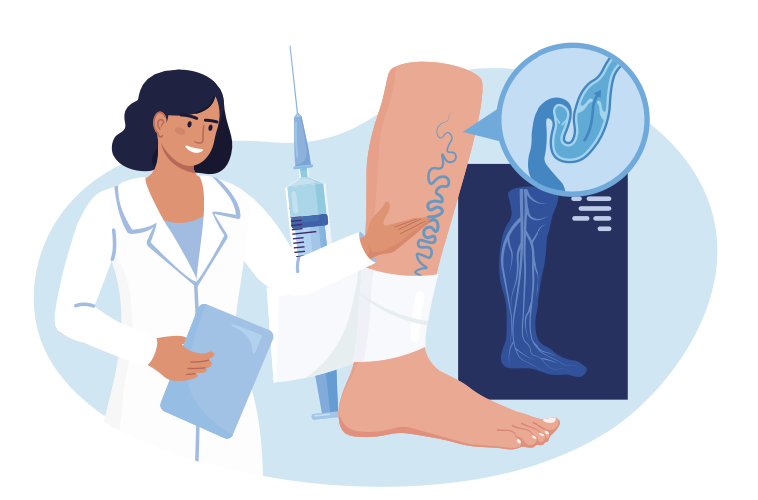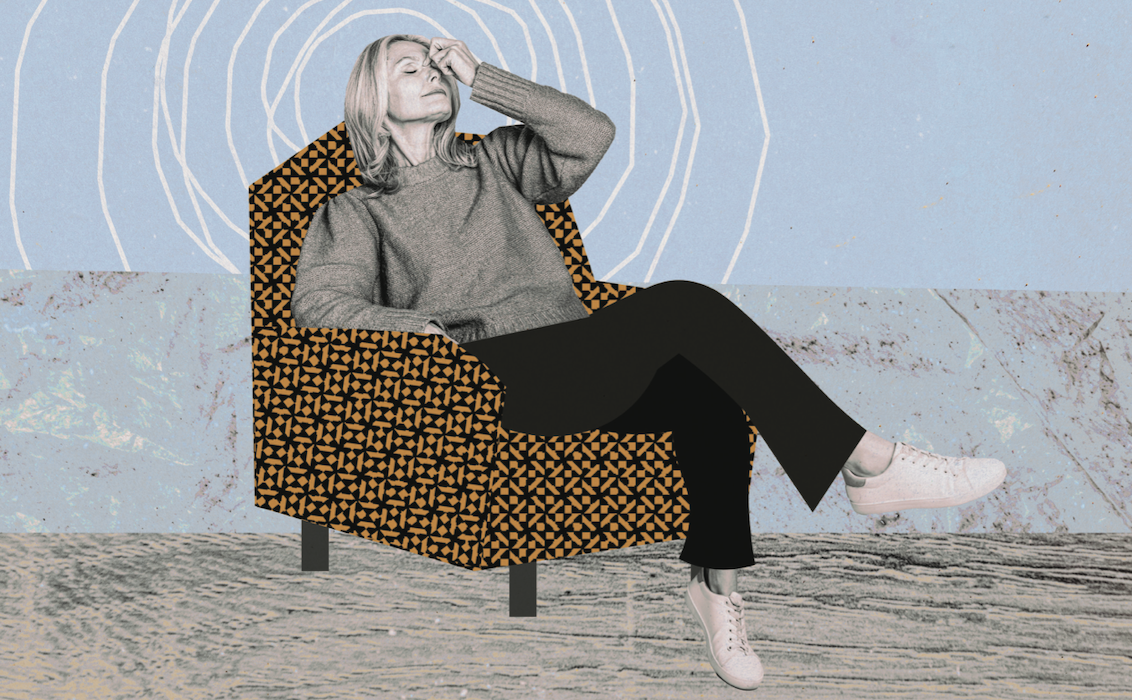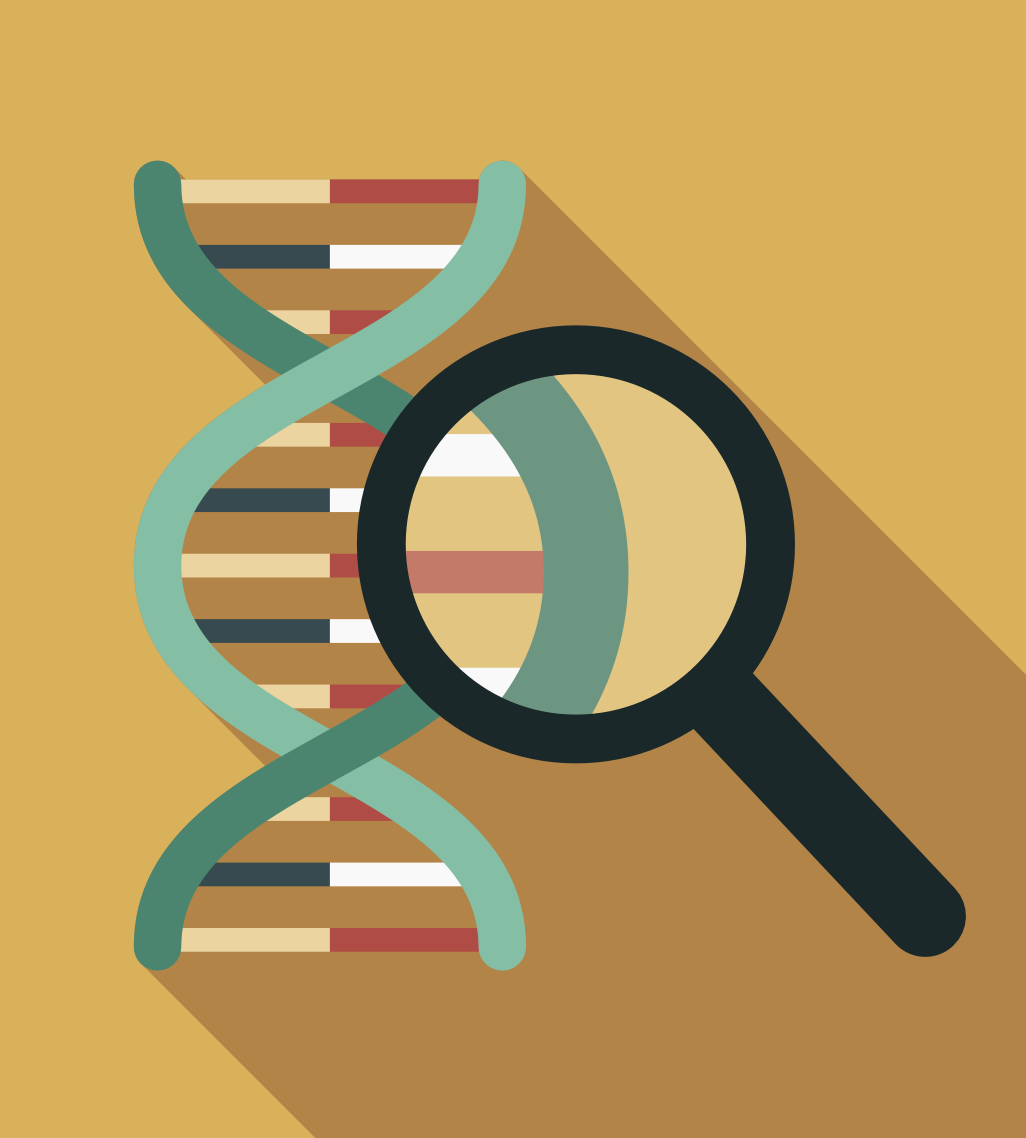By Wendy Haaf
Whether it’s for cosmetic or medical reasons, you can find a treatment for varicose veins
Dolly Ablitt, now 58, first noticed dilated, swollen veins in her lower legs during her second pregnancy, but they didn’t bother her, physically or aesthetically.
“I really couldn’t care less about an ugly vein on my leg,” says Ablitt, who lives in Calgary. Over 15 years, however, the associated symptoms exacted an ever-increasing toll on her well-being. Ablitt says that the worst of them was “this restless aching that happens when you go to bed and goes on and on and keeps you awake.” As the veins grew more visible, Ablitt also began to experience a jarring pain, when, for example, her clothing rubbed against the area. She began to look for treatment options.
An estimated 20 to 50 per cent of Canadian adults will recognize them- selves in Ablitt’s story. “Varicose veins are very common, and they can cause a lot of morbidity—that is, how they affect your quality of life,” says Dr. Janna Bentley, medical director of Lakeshore Vein & Aesthetics Clinic Inc., in Kelowna, B.C. Risk factors in- clude age, genetics, obesity and being overweight, pregnancy, and occupations involving extended periods of standing, sitting, or both. Women are only slightly more prone to varicose veins than men, accounting for rough- ly 55 per cent of cases, Bentley says.
Varicose veins arise when the blood in veins isn’t travelling back up towards the heart as effectively as it should. The arteries carry oxygen-rich blood throughout the body, while the veins return oxygen-depleted blood to the heart. Unlike arterial blood, which is pumped by the heart, blood in the leg veins must be squeezed up- ward—against gravity—by muscles in the calves and, to a lesser extent, the feet and thighs. “The deep venous sys- tem does 90 per cent of the work, and
the superficial system—the one where varicose veins occur—does less than 10 per cent,” Bentley explains.
Key to the success of this upward journey is a series of tiny one-way valves—picture pairs of doors that swing open and then slam shut. These keep the blood from draining back downward. In susceptible people, the walls of the superficial veins slacken. This causes them to grow wider, so the doors can no longer close tightly. As an aside, Bentley notes that “if a woman wears super high heels all the time, it deactivates her calf-muscle pump, which will affect the venous return.”
“There are two saphenous veins in each leg—the great saphenous vein and the small saphenous vein— and either can become varicose,” says Dr. Douglas A. Hill, medical dir- ector of The Vein Treatment Centre in Calgary and president of the Canadian Society of Phlebology. The blood in the affected veins “is either flowing in the wrong direction or just sitting there, increasing pressure,” he explains. Growing pressure expands the veins further and further. “As time goes on, the veins become larger and closer to the surface,” Hill says.
A 2020 study found that compared to systemic blood, the blood in varicose veins contains significantly higher levels of substances involved in inflammation, which may contrib- ute to symptoms and progression.
While some people feel nothing at all, others “notice that their legs are heavy, achy, and tired, especially towards the end of the day,” says Dr. John Harlock, associate professor and head of the Division of Vascular Surgery at McMaster University and Hamilton (Ont.) Health Sciences Centre and past-president of the Canadian Society for Vascular Surgery. “I’ve had people describe itchiness of the skin; a throbbing, aching sensation; and tenderness to the touch at times.” The nighttime aching Ablitt describes is a lesser-known but not uncommon symptom.
As the condition progresses, “people can have chronic swelling of the whole leg and ankle and skin dis- coloration that looks almost like a brownish sock,” Harlock says. “Even- tually it can cause a breakdown of the skin—open sores or ulcersulcers,” Hill adds. “And there’s a risk of superficial phlebitis, also called ‘superficial venous thrombosis.’ That’s when the blood is so stagnant in the vein that it can initiate clotting.”
Coping Strategies
If they’re started early, conservative strategies can help manage symptoms and delay progression. “The main thing is exercise—walking and moving around rather than just standing or sitting in one place for prolonged periods,” Harlock says. This helps circulate the blood by activating the calf- muscle pump.
Garments that push the valve doors closer together and gently squeeze blood back up the leg can also slow the progression, Hill says, if you wear them faithfully. “Compression socks or stockings are graduated—they’re tighter at the ankle and less tight up the calf,” Harlock explains. Now available in a wide range of colours, patterns, and breathable materials, compression hosiery is designed to apply specific levels of pres- sure. “The over-the-counter ones are 15 to 20 millimetres of mercury,” Harlock says, adding that these “are safe to wear even if you don’t have varicose veins.” (For example, you could wear them if you’re going to be on your feet all day or sitting in a plane for hours.) “The prescription ones start at 20 to 30 millimetres of mercury,” he says.
Experts recommend putting the socks or stockings on when you get out of bed in the morning and not taking them off until bedtime, on most days. “It doesn’t make the veins go away, but it can keep them at bay and help your legs feel less fatigued,” Harlock says.
Elevating your legs when possible can ease symptoms in the short term as well. Venixxa—an oral natural product made from immature oranges—may also offer mild relief for some people. “There’s some med- ical evidence” behind it, Harlock says.
Before you attribute uncomfortable symptoms to varicose veins, however, it’s important to see your primary-care provider. “There are so many causes of leg pain,” Hill stresses. “Just because you have visible veins in your legs doesn’t mean something else isn’t causing the pain or swelling.” For instance, these symptoms can also result from a blood clot in the leg, which can lead to potentially life-threatening complications, so your doctor may want to rule out this possibility. Varicose veins themselves don’t cause this condition—known as
deep-vein thrombosis, or DVT— but they are linked with a slightly in- creased risk. (According to Thrombosis Canada, the overall incidence of DVT in Canadian adults is one to two cases per 1,000 persons annually.)
If conservative management doesn’t offer sufficient relief, or it just isn’t feas- ible (for instance, if you physically can’t put on compression stockings due to limited mobility), you’ll undoubtedly want to explore available treatments.
Treatments
Bentley likens a superficial vein that’s stopped working to a diseased or damaged tree limb. “There’s no repairing it, so we just prune away the un- healthy branches,” she explains. Getting rid of these defective veins actually improves the body’s ability to return blood to the heart.
Traditionally, surgery to tie off the top of the vein and then pull it out— known as ligation and stripping—was the sole option. Typically a day surgery, the procedure is done in hospital under spinal or general anaesthesia, and wait times are long. Whether it’s covered in a given prov- ince or territory varies and can depend on medical necessity.
Today, however, people with the resources can choose any of several less-invasive treatments. “Ultrasound-guided sclerotherapy is done with a medication that’s mixed with air or carbon dioxide to make a foam that’s injected into the vein,” Hill says. “It irritates the vein wall; the vein shrinks and becomes a cord and then your body gradually absorbs it.” The cost depends in part on how many sessions (anywhere from $300 to $700 each) are needed to achieve the desired result. “It’s a good procedure,” Hill says. However, scler- otherapy may not be as successful as other modalities for larger veins, and the chance of the vein reopening at least partly is higher. “The recurrence rate within three to five years is probably 15 to 20 per cent,” he says. “That’s easy to treat, so it’s not a disaster.”
Another option is to insert a fine catheter into the vein somewhere below the knee and use either laser or radio-frequency energy to essentially cauterize it closed. (The former is called endovenous laser therapy, or ELVT; the latter, endovenous radio-frequency ablation.) This generates heat, so local anaesthetic is injected into the area beforehand and the vein is insulated to prevent damage to surrounding tissue. According to Hill, the two methods are “pretty equivalent in terms of success and risk.” The likelihood of recurrence “varies study by study but is more like five per cent.” The cost ranges from roughly $2,500 to $4,000 per leg. (Some clinics offer a discount when treating both legs.) Saskatchewan is the only jurisdiction in Canada where EVLT is covered by the provincial health insurance plan.
Endovenous thermal ablation “has been the standard approach in the rest of the world for about the past 15 years,” Harlock says. Still, there are situations in which so-called thermal ablation isn’t the best choice. “If the vein is really curvy and tortuous, it’s hard to get the catheter around those areas,” Harlock notes. (In this case, foam may be a better option.) Additionally, “heat-based procedures are almost contraindicated if the vein is close to a nerve,” Hill notes.
A third catheter-based procedure involves depositing small amounts of a medical-grade relative of Krazy Glue along the length of the vein. This type of adhesive has been used for decades in other parts of the body—for instance, to close abnormal connections of vessels in the tissues around the brain or spinal cord. The brand name of the product specifically developed for treating varicose veins is VenaSeal. The price is somewhat steeper than that of EVLT or radio-frequency ablation: in the neighbourhood of $5,000 per leg.
On the plus side, this treatment doesn’t require even local anaesthet- ic, and it can be used near a nerve without the risk of damage that heat- based treatments pose. Unlike the latter, however, “this is viewed as a permanent implant because the glue never totally disappears,” Hill ex- plains, adding that very rarely, “it can cause a hypersensitivity reaction that’s difficult to treat—sometimes the vein needs to be removed.”
What none of these treatments can do, however, is correct some- one’s underlying predisposition to developing varicose veins. New ones can—and often do—pop up over time. Consequently, some practitioners recommend returning for yearly checkups to try to catch these early. Foam is often used to treat these branch veins. Sometimes, a portion of the cost of these follow-up injections is covered by public insurance. For example, in Bentley’s B.C. clinic, “those sessions are $85 out of pocket, and the rest is covered by MSP [Medical Services Plan],” she says. “You’re allowed up to six ses- sions every 12 months,” since the problem is recognized as chronic. However, to qualify for this cover- age, Bentley notes, “you need a re- ferral from a family doctor.” This doesn’t mean that people with no primary-care provider can’t access care, but they’ll have to pay the full cost privately.
Eight years ago, Dolly Ablitt decided she was no longer willing to live with her increasingly disruptive symp- toms. After doing her homework, which included asking friends and colleagues for clinic recommenda- tions, she ended up undergoing sev- eral sessions of sclerotherapy, at a total cost of about $2,500. “None of that was covered, even by my ex- tended medical plan,” she says. Nonetheless, she considers it worth every cent and is scheduled for her first “tune-up.” “They call it a cosmetic treatment, but it’s more than that,” she says. “It actually takes away the pain so you can enjoy life and do your work without having to take sick time because you didn’t sleep.” Ablitt’s only regret? “I wish I’d done it sooner,” she says.






